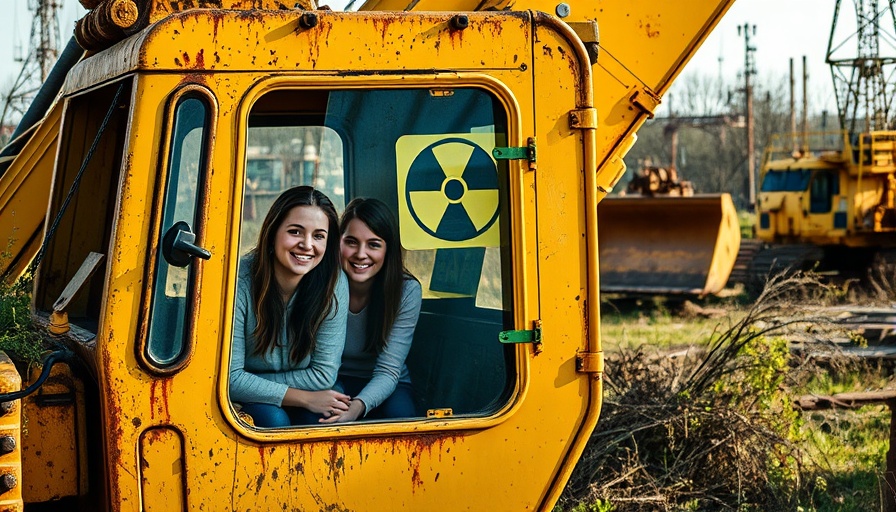
Unpacking the Chernobyl Tourism Phenomenon
The allure of Chernobyl as a tourist destination illustrates a complex relationship with history and danger. Now famed for its grim past, the site attracts thousands annually who seek a glimpse of the eerie remnants of the 1986 nuclear disaster. However, as recent news of tourists casually posing on a highly contaminated relic known as 'The Claw' highlights, this blend of curiosity and risk raises a pressing question: How safe is it to visit Chernobyl?
Understanding Radiation Levels
When the image of two girls perched atop 'The Claw' went viral, it sparked swift reactions online regarding the potential radiation risks associated with such behavior. This digger bucket was used during the clean-up operation that followed the catastrophic explosion, and it remains one of the most contaminated objects in the Exclusion Zone.
Experts clarify that while fleeting contact with highly radioactive objects could pose risks, the exposure from a mere photo opportunity is minimal. In fact, sitting on 'The Claw' briefly results in radiation exposure similar to that of a chest X-ray, allowing many to breathe a sigh of relief. Nevertheless, it’s essential for visitors to recognize that cumulative exposure is where the real danger lies, as repeated visits or extended times spent in contaminated sectors can lead to chronic conditions and heighten cancer risks.
Radiophobia: The Psychological Aspect of Radiation Anxiety
The unease surrounding radiation isn’t solely based on scientific facts but often stems from a psychological phenomenon known as radiophobia. This fear, which can arise post-nuclear disasters, tends to invoke anxiety over exposure to situations that may actually carry little physical risk. Chernobyl has become synonymous with danger in popular culture, and this can lead to overestimating the threat posed by low doses of radiation experienced during brief visits.
Safety Guidelines and Regulations
Tourism in Chernobyl is not without regulation. Guided tours are strictly monitored, incorporating measures like the use of dosimeters to track radiation exposure, while visitors are educated on how to navigate the site safely. Participants must adhere to safety protocols, such as wearing protective clothing and avoiding certain areas designated as highly contaminated. Such precautions are paramount in ensuring that curiosity does not come at the cost of health.
What Lies Ahead for Chernobyl Tourism?
Despite current geopolitical tensions, which have led the UK Foreign Office to warn against all but essential travel to Ukraine, interest in visiting Chernobyl shows no signs of waning. As tourism evolves in the Exclusion Zone, the enduring draw of exploring the remnants of this tragic event remains powerful. Chernobyl’s story continues to unfold, proving that even in the face of disaster, we are drawn to witness the remnants of human history, no matter the potential risks involved.
Final Thoughts
The juxtaposition of adventure against the backdrop of historical ‘ground zero’ showcases a human fascination with trauma and recovery. For those considering a visit to Chernobyl, understanding the balance between risk and caution is crucial. If you're intrigued by Chernobyl's past and its lessons, eager to discover more, dive deeper into understanding these historical events and their implications on modern society.
 Add Row
Add Row  Add
Add 




Write A Comment